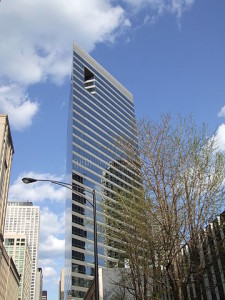excerpt from The Left, the Right, and the State by Llewellyn H. Rockwell Jr.:
Restricting the supply of medical care has a long history. Hippocrates built a thriving medical center on the Greek island of Cos in the fourth century B.C., and taught any student who could pay the tuition. But when the great man died, there was fierce competition for students and patients, and the doctors sought to cartelize the system with the Hippocratic Oath.
The oath pledged devoted care to the sick, but also that “I will hand on” my “learning to my sons, to those of my teachers, and to those pupils duly apprenticed and sworn, and to none others.”
In the modern world, England’s Royal College of Physicians (RCP)—a state-approved licensing agency—has long been the model medical monopoly, exercising iron control over its members’ economic conduct. But this guild-like system wasn’t salable in laissez-faire America.
In 1765, John Morgan tried to start an intercolonial medical licensing agency in Philadelphia, based on the RCP. He failed, thanks to bitter infighting among the doctors, but did begin the first American medical school, where he established the “regular mode of practice” as the dominant orthodoxy. Those who innovated were to be punished.
After the Revolution, said historian Jeffrey Lionel Berlant, “a license amounted to little more than a honorific title.” In Connecticut and Massachusetts, for example, unlicensed practitioners were prohibited only from suing for fees. And in the free market 1830s, one state after another repealed penalties against unlicensed practice.
By the mid-nineteenth century, there were virtually no government barriers to entry. As economist Reuben A. Kessel noted, “Medical schools were easy to start, easy to get into, and provided, as might be expected in a free market, a varied menu of medical training that covered the complete quality spectrum.” Many were “organized as profit-making institutions,” and some “were owned by the faculty.”
From time to time, doctors attempted to issue tables of approved fees—with price-cutting called unprofessional—but they failed, because price-fixing cannot long survive in a competitive environment.
Organized medicine’s lobbying against new doctors and new therapies began to be effective in the middle of the century, however. The official reason was the need to battle “quackery.” But as historian Ronald Hamowy has demonstrated in his study of state medical society journals, doctors were actually worried about competition lowering their incomes.
The American Medical Association (AMA) was formed in 1847 to raise doctors’ incomes. Nothing wrong with that, if it had sought to do it through the market. Instead, its strategy, designed by Nathan Smith Davis, was the establishment of state licensing boards run by medical societies. He attacked medical school owners and professors who “swell” the number of “successful candidates” for “pecuniary gain,” fueled by the “competition of rival institutions.” These men advance “their own personal interests in direct collision” with “their regard for the honor and welfare of the profession to which they belong.” The answer? “A board of examination, to sit in judgment” to restrict entry and competition, which he did not point out could only have a pecuniary motive.
As philosopher William James told the Massachusetts legislature in 1898: “our orthodox medical brethren” exhibit “the fiercely partisan attitude of a powerful trade union, they demand legislation against the competition of the ‘scabs.’” And by 1900, every state had strict medical licensure laws.
The Flexner Report of 1910 further restricted entry into the profession, as legislatures closed non-AMA-approved medical schools. In 1906, there were 163 medical schools; in 1920, 85; in 1930, 76; and in 1944, 69. The relative number of physicians dropped 25 percent, but American Medical Association membership zoomed almost 900 percent.
During the great depression, as Milton Friedman notes, the American Medical Association ordered the remaining medical schools to admit fewer students, and every school followed instructions. If they didn’t, they risked losing their AMA accreditation.
Today, with increasing government intervention in medicine — often at the AMA’s behest— the organization exercises somewhat less direct policy control. But it still has tremendous influence on hospitals, medical schools, and licensing boards.
It limits the number of medical schools, and admission to them, and makes sure the right to practice is legally restricted. The two are linked: to get a license, one must graduate from an AMA-approved program. And there is a related AMA effort to stop the immigration of foreign physicians. The American Medical Association also limits the number of hospitals certified for internships, and licensure boards will accept only AMA-approved internships.
The licensure boards—who invariably represent medical societies—can revoke licenses for a variety of reasons, including “unprofessional conduct,” a term undefined in law. In the past, it has included such practices as price advertising.
Medical licensure is a grant of government privilege. Like all such interventions, it harms consumers and would-be competitors. It is a cartelizing device incompatible with the free market. It ought to be abolished.
